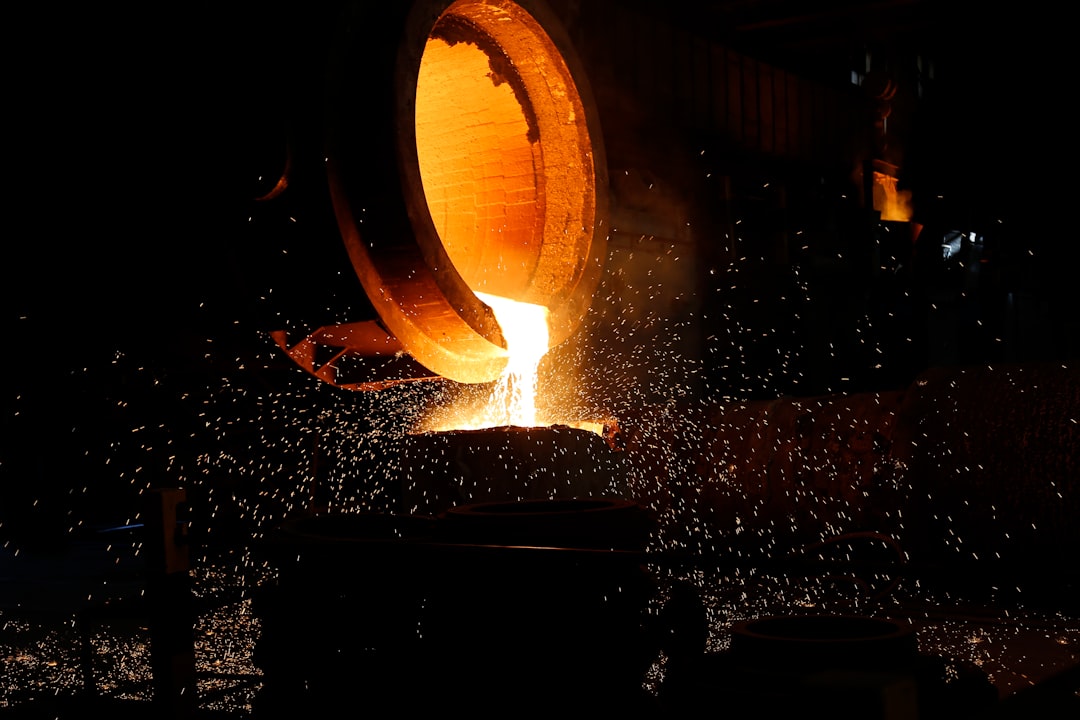The steel manufacturing industry is a cornerstone of modern infrastructure, powering everything from skyscrapers to vehicles. However, this vital sector comes with inherent risks. From extreme temperatures and heavy machinery to hazardous materials and confined spaces, the potential for accidents is significant. This comprehensive guide explores the crucial aspects of occupational safety in steel manufacturing, providing insights into best practices and highlighting the importance of a proactive safety culture.
1. Identifying and Assessing Hazards in Steel Manufacturing
Hazard identification is the bedrock of any effective safety program. In steel manufacturing, hazards are numerous and varied. These include:
- Burn Hazards: Molten metal, hot surfaces, and sparks pose significant burn risks. Workers need adequate training and protective gear to mitigate these dangers.
- Crushing and Cutting Hazards: Heavy machinery, rolling mills, and presses present severe crushing and cutting hazards. Lockout/tagout procedures and machine guarding are essential.
- Falling Object Hazards: Materials handling, overhead cranes, and structural work increase the risk of falling objects. Proper lifting techniques, safety nets, and hard hats are crucial.
- Chemical Hazards: Exposure to various chemicals, including lubricants, cleaning agents, and dust, can cause respiratory problems, skin irritation, and other health issues. Proper ventilation, personal protective equipment (PPE), and safe handling procedures are necessary.
- Noise Hazards: The constant loud noise from machinery can lead to hearing loss. Hearing protection is mandatory, and noise reduction measures should be implemented.
- Confined Space Hazards: Many tasks in steel manufacturing involve working in confined spaces, where oxygen deficiency, toxic gases, and other dangers exist. Proper entry procedures, monitoring, and ventilation are critical.
- Heat-resistant clothing: Protecting workers from burns and heat exposure.
- Safety footwear: Steel-toe boots to protect against falling objects and crushing hazards.
- Safety helmets: Hard hats to protect against falling objects.
- Eye protection: Safety glasses or face shields to protect against flying debris and sparks.
- Hearing protection: Earplugs or earmuffs to protect against noise-induced hearing loss.
- Respiratory protection: Respirators to protect against dust, fumes, and gases.
- Gloves: Heat-resistant, cut-resistant, or chemical-resistant gloves depending on the task.
- Fire emergencies: Clear evacuation routes, fire suppression systems, and fire drills are necessary.
- Medical emergencies: Designated first-aid stations, trained first-aiders, and emergency medical services (EMS) contact information must be readily available.
- Equipment malfunctions: Procedures for shutting down machinery safely and dealing with equipment failures must be established.
- Chemical spills: Spill response plans, including containment and cleanup procedures, are crucial.
- Severe weather events: Procedures for dealing with severe weather, such as storms and high winds, must be in place.
- OSHA (Occupational Safety and Health Administration) regulations (in the US): These regulations cover various aspects of workplace safety, including hazard communication, personal protective equipment, and machine guarding.
- Local and national safety standards: These standards may address specific hazards in the steel manufacturing industry.
- Reporting requirements: Manufacturers must report accidents and injuries to the relevant authorities.
- Record-keeping requirements: Detailed records of safety incidents, training, and inspections must be maintained.
- Leadership commitment: Top management must demonstrate a visible commitment to safety.
- Employee involvement: Workers should be encouraged to identify hazards, report near misses, and participate in safety initiatives.
- Regular safety training: Comprehensive and ongoing safety training is crucial for all employees.
- Safety communication: Effective communication channels for sharing safety information and promoting a safety-conscious culture.
- Incentive programs: Rewarding safe work practices can reinforce a positive safety culture.
- Incident investigation: Thorough investigation of incidents to identify root causes and prevent recurrence.
A thorough risk assessment, involving identifying hazards, evaluating their risks, and implementing control measures, is crucial for minimizing these dangers. This process should be regularly reviewed and updated.
2. The Crucial Role of Personal Protective Equipment (PPE)
Personal Protective Equipment (PPE) is the last line of defense against workplace hazards. In steel manufacturing, appropriate PPE is non-negotiable and includes:
Regular inspections and maintenance of PPE are essential to ensure its effectiveness. Workers must be properly trained on the correct use and limitations of their PPE.
3. Emergency Procedures and Response in Steel Mills
Having well-defined emergency procedures is paramount. Steel mills must have comprehensive plans for various emergencies, including:
Regular training and drills are essential to ensure that all employees are familiar with emergency procedures and can respond effectively in case of an incident.
4. Regulatory Compliance and Legal Obligations
Steel manufacturers must comply with a range of safety regulations and legal obligations. These vary by location but generally include:
Staying up-to-date with relevant regulations and ensuring compliance are crucial for avoiding penalties and ensuring a safe working environment.
5. Fostering a Strong Safety Culture
A strong safety culture is not just about rules and regulations; it’s about a shared commitment to safety at all levels of the organization. Key elements include:
By fostering a strong safety culture, steel manufacturers can significantly reduce the risk of accidents and create a healthier and more productive work environment.
Conclusion: Occupational safety in steel manufacturing is a multifaceted challenge requiring a proactive and comprehensive approach. By prioritizing hazard identification, utilizing appropriate PPE, implementing robust emergency procedures, ensuring regulatory compliance, and cultivating a strong safety culture, the industry can significantly reduce workplace risks and create a safer environment for its workforce.
Tags: steel manufacturing safety, occupational safety, steel mill safety, industrial safety, workplace safety




